Are you curious about how to keep your poultry comfortable and breathing easy year-round?
If so, it might be time for you to consider adding more cross-ventilation to your coop. ventilation could also cause problems with your flock if it’s not adequate.
We’ll explore the why and the how in what follows… and also talk about the critical difference between ventilation and drafts. Let’s get started!
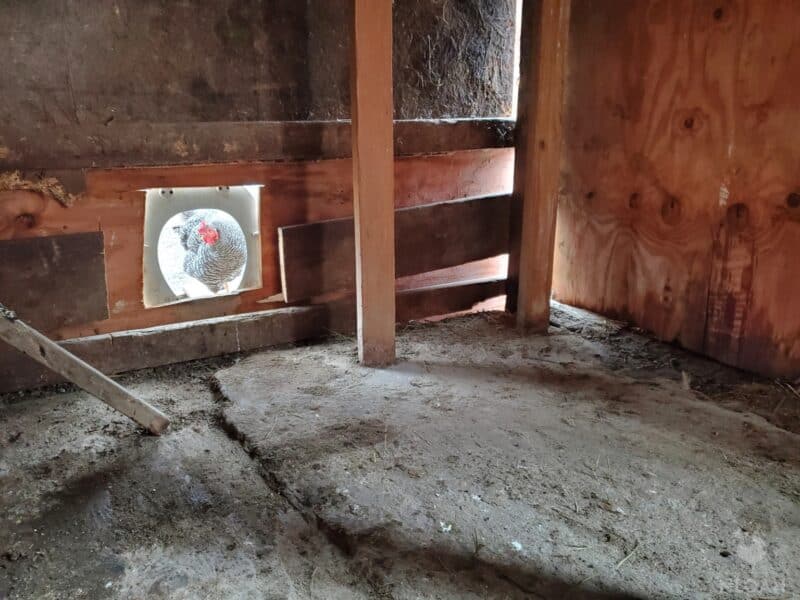
Why Does a Chicken Coop Need Ventilation?
The coop is supposed to be a safe and healthy place for your chickens to live. In order for them to be healthy you need to allow for ventilation. With a poorly ventilated coop, your chickens can develop respiratory problems.
Without proper ventilation the ammonia from the chicken droppings will accumulate, and cause breathing problems for them.
The ammonia fumes are lighter than air but when the air is heavy or the humidity is high it causes the fumes to be heavier.
In a humid environment, the ammonia fumes cannot rise therefore it can cause the chickens respiratory issues.
Not only that, but in cold weather, a lack of ventilation can lead to other disastrous consequences for your birds. One is that chickens, who are naturally cold-hardy for the most part, have legs, wattles, and combs that are not guarded by featers.
Yes, there are a few breeds that don’t fall into this category (any feather-footed breed, for example), but for most chickens, frostbite is pretty serious…
Many folks assume that frostbite only occurs when the weather is extremely cold, but the reality is that chickens are quite cold-hardy.
It’s the combination of cold and moisture that is dangerous. If you keep your coop well-ventilated, it will prevent the build-up of moisture and reduce the likelihood of your chickens becoming frostbitten.
Ventilation is different from having a draft in your coop. Ventilation is purposeful and helps with maintaining a temperature, ridding smells, ridding moisture, and allowing for air movement.
A draft is where cold air gets in and keeps the area cold. The drafty air can blow in quickly, and cause the warm air to escape.
Covering Cracks in A Drafty Coop
To control drafty areas in your coop you may need to seal off cracks.
Be especially sure to not have any drafty areas near the roost as this makes the chickens very cold and can cause illness. You can wrap your coop in the cold months, especially if it gets very cold, to help eliminate drafty air from entering the coop.
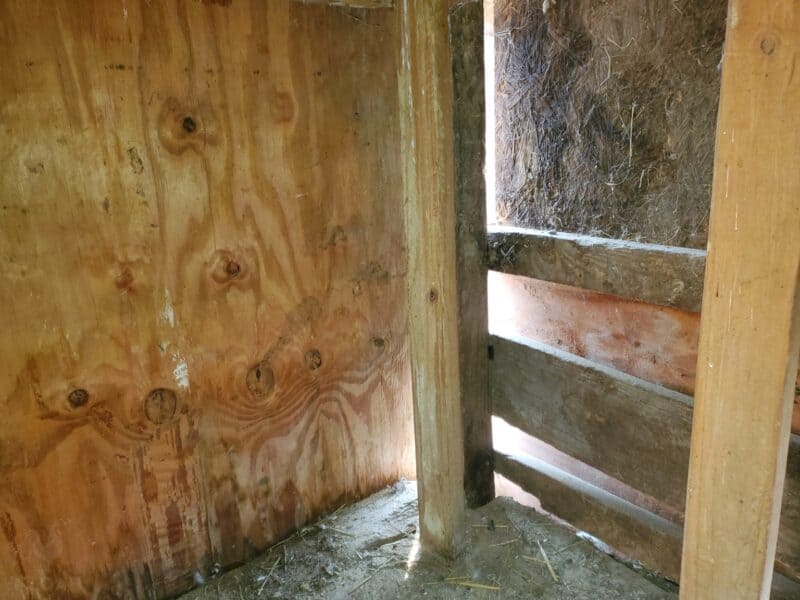
We wrap our coop with a tarp or even house wrap to help prevent the cold air from entering the coop. The wrap is easily removed in the summer where the weather’s warmer.
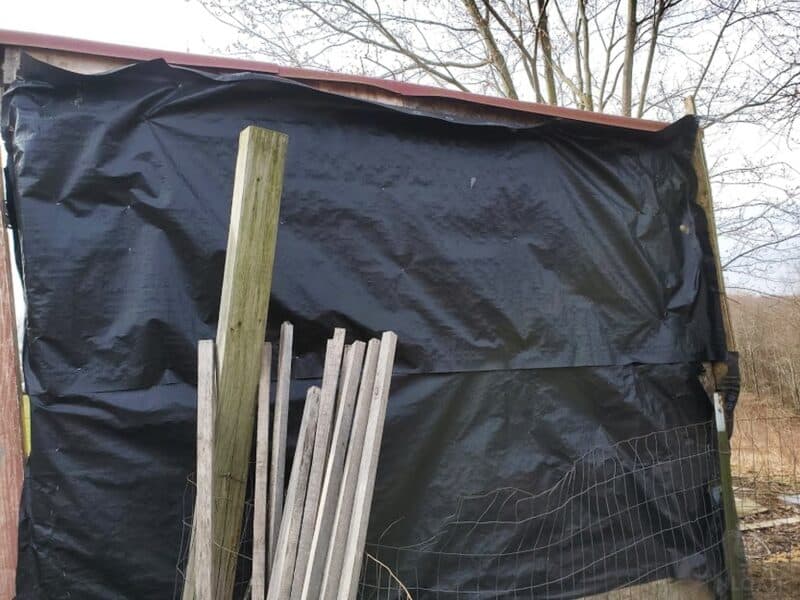
When a chicken is cold, it has eat more to try to warm up. The drafty coop will in turn cost you more money in the way of increased feed and sick chickens.
A drafty coop also allows for the water to freeze more quickly. The cold air can also cause frostbite to the chickens’ combs and waddles.
Proper Ventilation
Add a Window
To get ventilation you need to be able to have air movement. This could be where you have an open window on one side of the coop, and then the coop door open on the other side.
This way, there is a breeze that can blow completely through the coop. Also, heat rises so our coop has openings around the top to allow for air to escape.
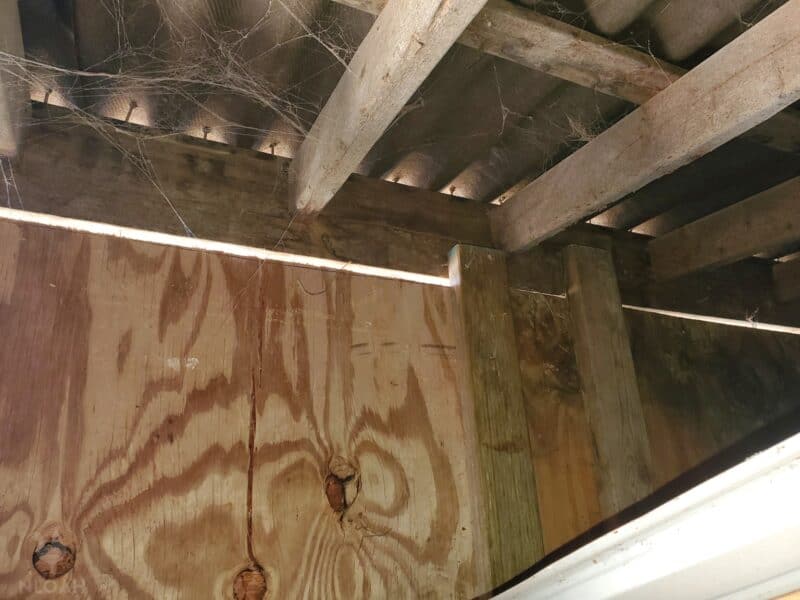
Keep it Dry and Clean
If your coop gets wet then the humidity inside can get pretty high. A higher humidity makes it hotter, and can even make it more difficult to breathe. The air flow can help to dry up any wet places in your coop and keeps the humidity levels down.
A wet coop; whether it be rain or dumped water, can cause the ammonia to be overwhelming. As soon as you realize the bedding or anything is wet then be sure to clean it out and compost it.
Keeping your coop cleaned out from the chicken droppings and dirty bedding from the nesting boxes doesn’t mean that the ammonia is eliminated.
I just cleaned my coop out, and it was miserable. It was stuffy, hot, and stinky… Whew!
The sweat was pouring, and the coop wasn’t even that bad. Then I realized I should open the window all the way up, it was only partially open.
It was a beautiful day and I had the coop door open. The difference opening the window all the way made was crazy, it instantly cooled the coop down.
That said, keeping the coop as clean as possible will help reduce some dampness and odor in the hot summer months. Getting rid of all that dust and bedding – which is loaded with urine and water vapor – can only benefit your chickens and their health.
Depending on how many chickens you have (and whether you’re using deep litter method or another form of bedding), your coop needs to be cleaned at least once every few weeks or every couple of months (if you’re doing deep litter in the winter months).
This won’t do anything for airflow, but will help the overall climate inside the coop. Be sure to put down fresh bedding, like straw, sand, or wood shavings, after cleaning the coop to keep it dry and clean.
Add Chicken Coop Ventilation Systems Like Vents
Now, there are three different methods to provide ventilation to your coop…
There is passive ventilation, also known as natural. This is where the ventilation is provided without any work from you or machines.
Examples of passive ventilation are open windows, which also add that extra light that chickens need. In the cold months the windows need to be closed, When it is hot it is best to open the windows all of the way.
In the spring I like to crack the window open a few inches and allow fresh air in, just like opening your house windows and airing out your house.
Gable end vents can be used to allow for free air flow. Place a vent on each side so that it can create a breeze. Something as simple as opening the door and having a chicken run door will provide some much needed ventilation.
Put a Fan In
Second, there is active ventilation, also known as mechanical. Active ventilation is provided by the use of fans blowing air in your coop. With it you don’t need as many holes in your coop providing the fans are working.
The fans are either electric or solar powered. Either way there is a drawback to using fans such as the power is out, it hasn’t been very sunny, or the fans quit working. Whatever the situation there will not be enough ventilation in your coop.
Use the Wind
Last, there is wind turbine ventilation, this is just like it sounds. There is a hole cut in the roof of the coop and a spinning fan powered by wind is placed.
When the wind is blowing it works great at moving air, but when the wind is still the turbine is too. When the blades are still you just have a hole in your roof. This allows for rain or maybe even animals to come in.
In my opinion, passive ventilation is the safest and best option for providing air flow into your chicken coop. Whatever method you choose to provide the ventilation is fine just so long as there is air movement in your coop.
Go stand in the coop for a few minutes, and you will be able to tell if you need to add more for the air flow.
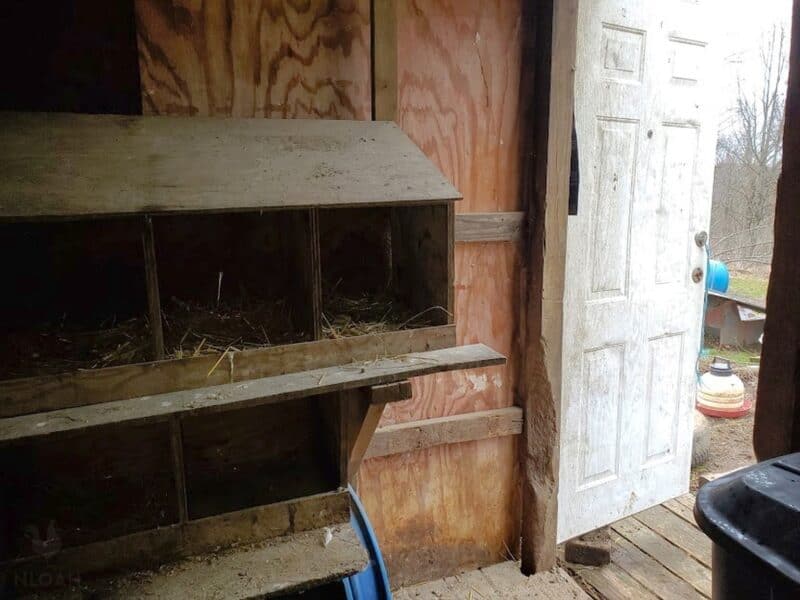
Consider Solutions That Work With Your Climate
So this idea won’t work well if you live in a cold climate, but if you live in a place where the weather is hot year-round, you may want to build an open-wall coop.
This is exactly as it sounds – the walls (or the majority of the walls) are made out of hardware cloth instead of wood. The coop has a ton of ventilation and the walls can be covered with a tarp or plywood in the event of a storm.
This is a good way to provide your chickens with the ventilation they need; however, it won’t work as well if your chickens need protection from the cold.
Can You Have Too Much Ventilation in a Coop?
The question of having “too much ventilation” is a tricky one. Some believe that too much airflow through the coop can result in colder temperatures, increased chances of infection or illnesses among the chickens, and an uncomfortable living arrangement.
Others think that enough vents and air flow can help counter some of the more noxious smells you can get with too many birds as well as reduce humidity to better protect against mites and disease.
The reality is that when some people say that a coop has too much ventilation, it’s not really ventilation they’re referring to, but drafts. If you follow the steps I gave you earlier in the post, you shouldn’t have a problem with “too much ventilation.”
Consider How Predators Will Factor In
Before you go out and completely redesign your coop to add more ventilation, be sure to pay some thought to how you are going to keep predators away.
Having a window open all the time is nice in theory, but it will be inviting foxes, weasels, raccoons, and other predatory animals to an all-day and all-night chicken buffet.
Use hard or welded wire cloth, and make sure you have the coop predator-proof. Protection from hungry animals is just as important for your chickens as good ventilation is!
Keep the Typical Chicken Coop Layout in Mind
There are three levels to a coop, this does not actually mean floors. Each level has a job and a need.
The top level is the space above the chickens’ heads to the roof. In the top level there needs to be a way for the air to escape. This is also where the windows should be. Cold weather ventilation is high up, and will be protected by roof overhangs.
The middle level is where the roost is and the chickens rest. This is also the area where my nesting boxes are. You do not want there to be an opening here as it is best for the chickens health.
The bottom level is the lower 12 to 18 inches of the coop. This is where the run door is, and where the chicken water and feed is usually placed. The bottom level is also where the chicken dropping will be.
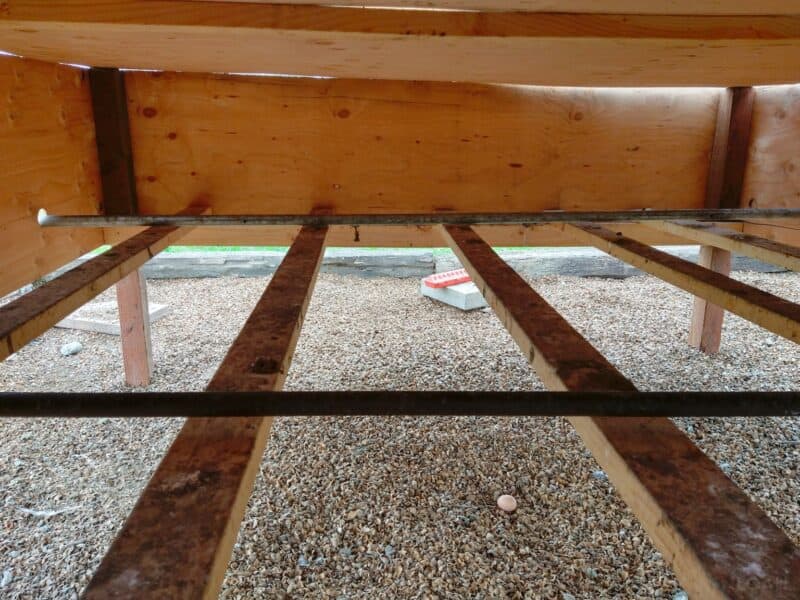
Overcrowded coops can also cause health issues and more of a mess in the coop. Chickens are covered in feathers which help to keep them warm but can also cause them to overheat.
If you see a chicken with its wings outstretched and breathing hard then it is overheating. You may want to look into the amount of ventilation that your coop is providing.
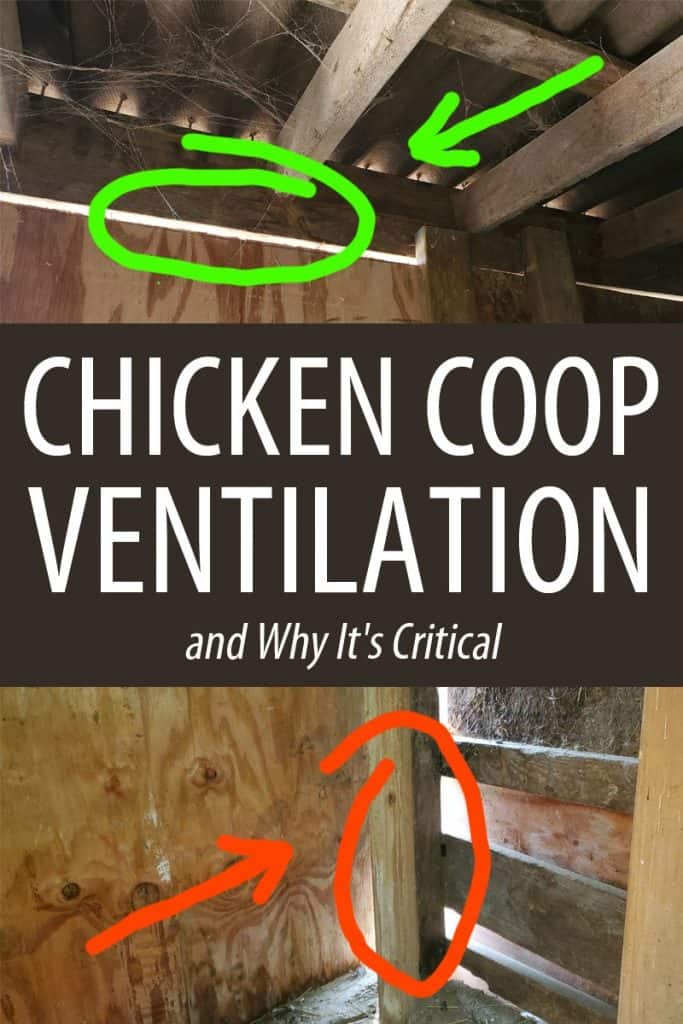

Sarah Rodriguez is a homesteading wife and mother of five living in Appalachia. She grew up in a homesteading and logging family.
She and her husband Arnie work their 10-acre homestead together alongside their growing family. Sarah honed her self-reliance skills through 4-H and FFA at an early age and is now teaching her children to live off the land, raise livestock, and the importance of both sustainability and frugality.
